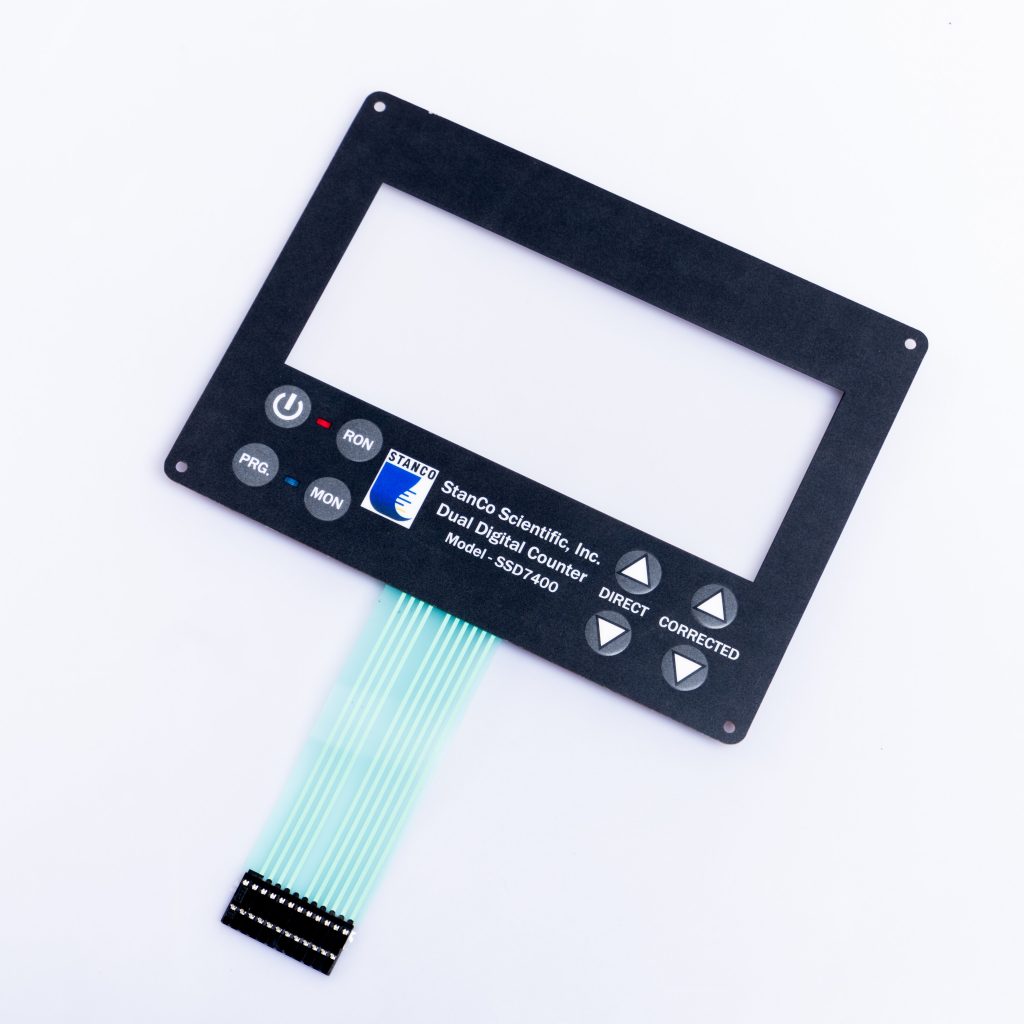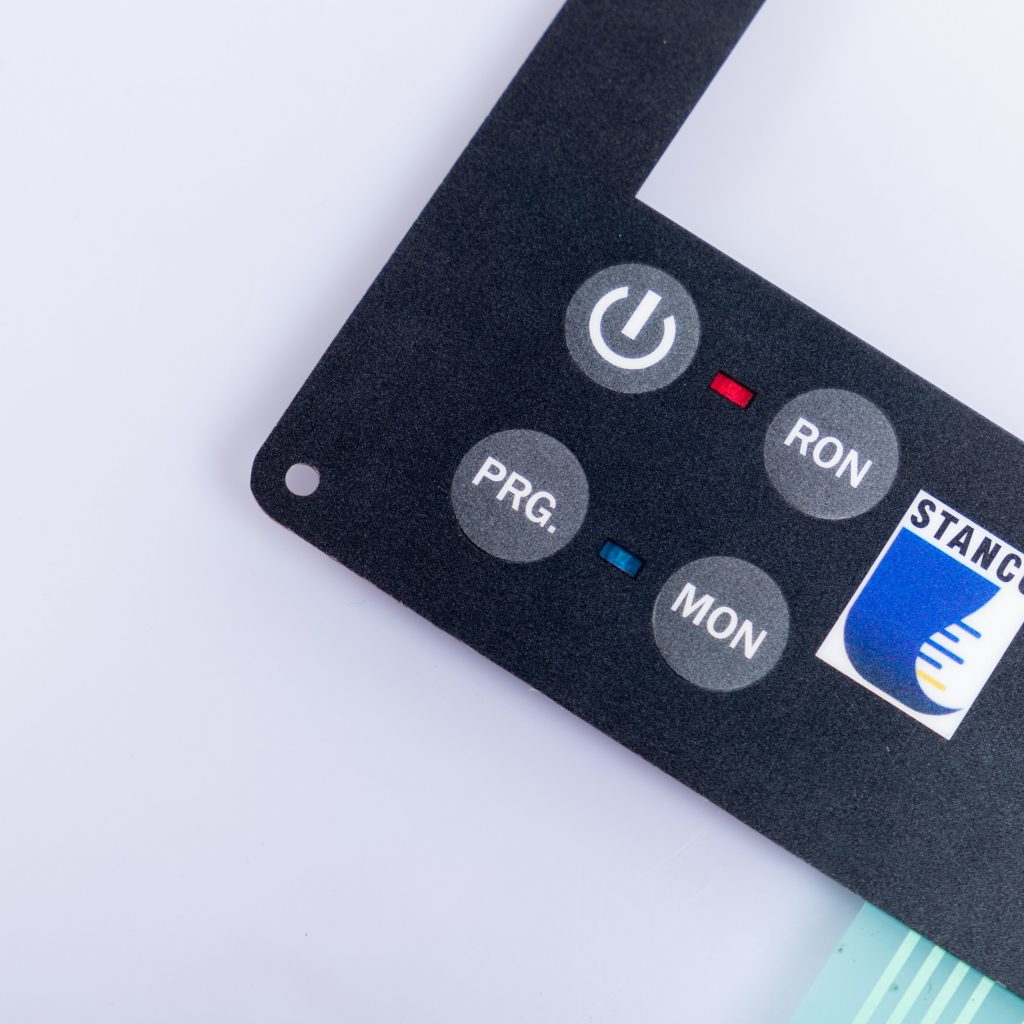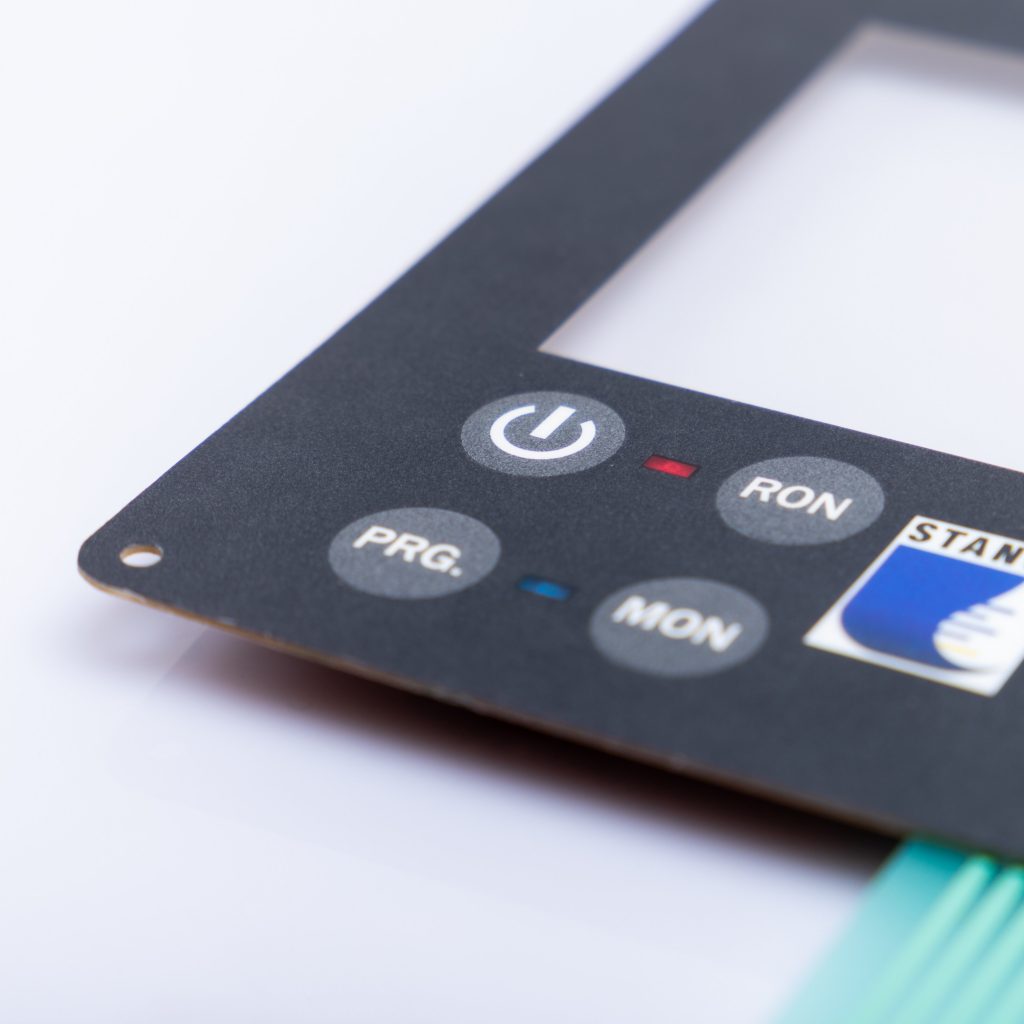Contact
Write to Us And We Would Be Happy to Advise You.
Do you have any questions, or would you like to speak directly with a representative?
By hqt
Membrane switches have become a ubiquitous part of our daily lives, found in everything from microwave ovens to sophisticated medical devices. At the heart of these components lies the actuation force, a critical factor that not only affects the user’s tactile experience but also the longevity of the switch itself. This article delves into the nuances of actuation force and its impact on the lifespan of membrane switches, offering insights into design, user interaction, and maintenance practices that can optimize performance and durability.



Membrane switches are a marvel of modern engineering, offering a seamless and responsive interface for an array of electronic devices. The actuation force plays a pivotal role in their functionality, determining how much pressure is required to activate the switch and send the necessary electrical signal. This force is not just about the immediate response; it also has long-term implications for the switch’s lifespan.
Actuation force is measured in grams or newtons and is a measure of the pressure needed to collapse the membrane dome to make a connection. It’s a delicate balance; too much force can lead to user fatigue, while too little can result in accidental actuation.
Precise measurement of actuation force is crucial for consistency and reliability. Manufacturers use specialized equipment to ensure that each switch meets the required specifications, contributing to the overall quality and lifespan of the product.
The materials used in membrane switches must be resilient enough to withstand repeated use. The choice of material can significantly affect the required actuation force and, consequently, the lifespan of the switch.
Designers must consider the actuation force during the design phase to ensure a balance between user experience and product durability. Factors such as dome shape and circuit design play a vital role in this balance.
The physics of actuation force involves understanding how the force applied translates into electrical contact and signal transmission. Over time, the physical properties of the materials involved can change, affecting both the actuation force and the lifespan of the switch.
Repeated actuation can lead to wear and tear on the switch components. Understanding how the force applied affects the rate of this wear is key to predicting and extending the lifespan of the switch.
The actuation force must be user-friendly, allowing for comfortable and intuitive interaction with the device. Ergonomic considerations are essential for devices that are used frequently or for extended periods.
Users play a significant role in the lifespan of a membrane switch. How they interact with the switch, including the force and frequency of actuation, can accelerate or mitigate wear.
There are established industry standards that dictate the acceptable range of actuation force for membrane switches. These standards help ensure a baseline for quality and longevity.
Regular testing protocols are in place to monitor the performance of membrane switches over time. These tests simulate extended use and help predict the lifespan of the switches under normal operating conditions.
Examining case studies from various industries can provide valuable insights into how actuation force affects the lifespan of membrane switches in practical settings.
Industry examples offer a wealth of knowledge, showcasing the successes and challenges faced when balancing actuation force with switch lifespan.
Technological advancements have led to new materials and designs that can enhance the relationship between actuation force and lifespan.
Emerging trends in the industry suggest a future where actuation force is optimized through smart materials and adaptive designs, further improving the lifespan of membrane switches.
Proper maintenance can extend the life of a membrane switch. This section outlines the best practices for caring for these components.
Regular maintenance is not just about keeping a membrane switch clean; it’s about ensuring that the actuation force remains consistent over time. This can involve periodic testing, environmental control, and the cleaning of contacts to prevent the build-up of contaminants that could alter the force required for actuation.
When a membrane switch begins to fail, it’s often due to issues related to actuation force. Recognizing the signs of these problems early can prevent further damage and extend the switch’s useful life.
Once a problem is identified, there are several steps that can be taken to rectify the issue. This might include recalibrating the actuation force, replacing worn components, or redesigning elements of the switch to better accommodate the force exerted by users.
In custom membrane switch solutions, the actuation force is tailored to the specific needs of the application. This customization can greatly enhance both the user experience and the lifespan of the switch.
Custom solutions must strike a balance between a comfortable actuation force and the longevity of the switch. This involves careful consideration of user needs and the intended use of the product.
The environment in which a membrane switch is used can greatly affect both the required actuation force and the lifespan of the switch. Extreme temperatures and humidity levels can cause materials to expand, contract, or degrade, which in turn can alter the actuation force over time.
For membrane switches used in extreme environments, special designs and materials are necessary to ensure that the actuation force remains consistent and the lifespan of the switch is not compromised.
In industries like healthcare, where cleanliness and precision are paramount, the actuation force must be reliable and the switches must be durable enough to withstand frequent cleaning and sterilization.
In industrial settings, membrane switches must be robust enough to handle not just a precise actuation force but also the harsh conditions that are often present in these environments.
The actuation force should be integrated seamlessly into the design of the user interface, ensuring that it complements both the aesthetics and the functionality of the device.
The tactile feedback provided by the actuation force is a key component of the user experience. It must be designed to give clear and immediate response to the user, indicating successful actuation.
The design choices that affect actuation force and lifespan also have economic implications. A cost-benefit analysis can help determine the most economical choices without compromising quality.
By optimizing the actuation force, companies can save money in the long run through reduced warranty claims, fewer repairs, and less frequent replacements.
Understanding consumer preferences regarding actuation force can guide manufacturers in designing membrane switches that meet user expectations and last longer.
As consumers increasingly value durability, manufacturers must adapt their designs to meet this demand, which often involves optimizing the actuation force.
Industry leaders provide valuable insights into the current state of membrane switch technology and how actuation force affects lifespan.
Experts often make predictions about the direction of membrane switch technology, including how actuation force will be managed in future designs.
In this detailed analysis, we explore the direct correlation between actuation force and the lifespan of a membrane switch. By understanding this relationship, manufacturers can create switches that not only last longer but also provide a better user experience.
The actuation force is a critical component in the design and function of membrane switches. Its influence on the lifespan of these switches is undeniable, and understanding this relationship is key to developing reliable, user-friendly interfaces. By considering the factors outlined in this article, manufacturers can ensure that their membrane switches meet the highest standards of durability and performance.
How does a higher actuation force impact the lifespan of a membrane switch? A higher actuation force can potentially shorten the lifespan of a membrane switch by causing more stress on the components, leading to quicker wear and tear.
Can the actuation force be adjusted after a membrane switch has been manufactured? In some cases, the actuation force can be adjusted by recalibrating the switch or changing the dome design, but this is typically done during the design phase.
What is the ideal actuation force for a membrane switch? The ideal actuation force varies depending on the application and user preference, but it generally ranges from 150 to 400 grams to balance user comfort and switch longevity.
How do environmental factors affect the actuation force and lifespan of a membrane switch? Extreme temperatures and humidity can cause materials to degrade or change properties, affecting the actuation force and potentially shortening the lifespan of the switch.
Is it possible to design a membrane switch that maintains a consistent actuation force over its entire lifespan? While it is challenging to maintain a completely consistent actuation force over the lifespan of a switch, advanced materials and design techniques can minimize changes and extend the switch’s life.
What are the signs that the actuation force of a membrane switch is degrading? Signs of degradation include changes in the tactile response, inconsistency in activation, or the need to apply more force to achieve actuation.
Do you have any questions, or would you like to speak directly with a representative?